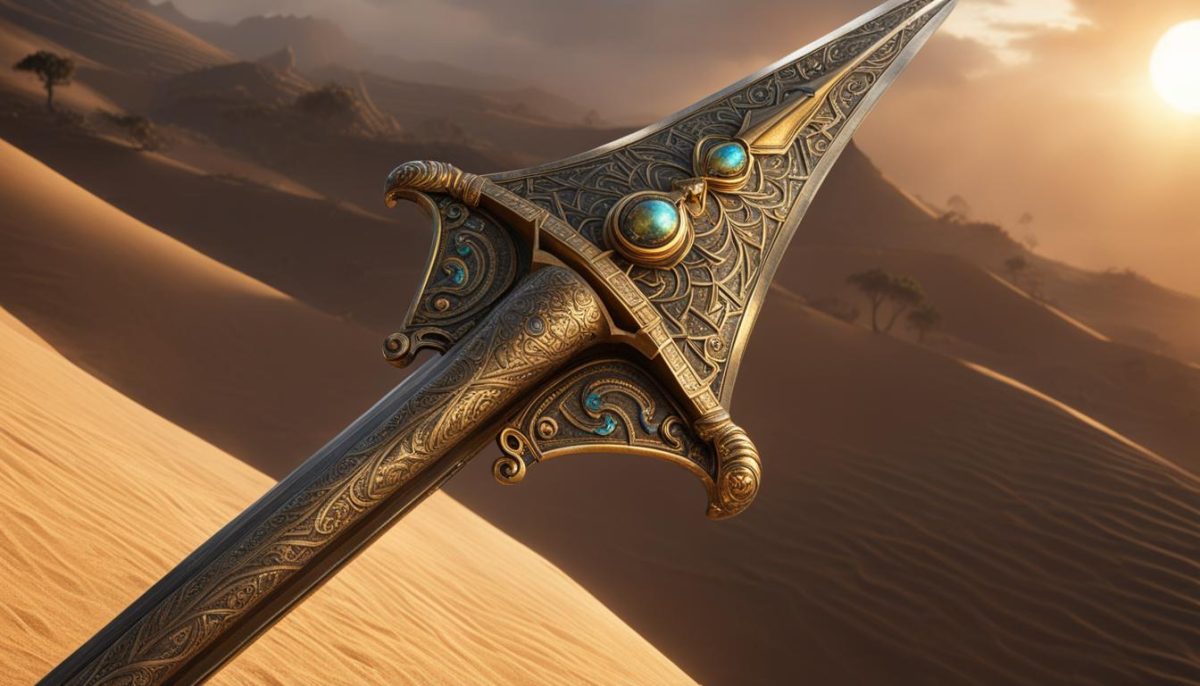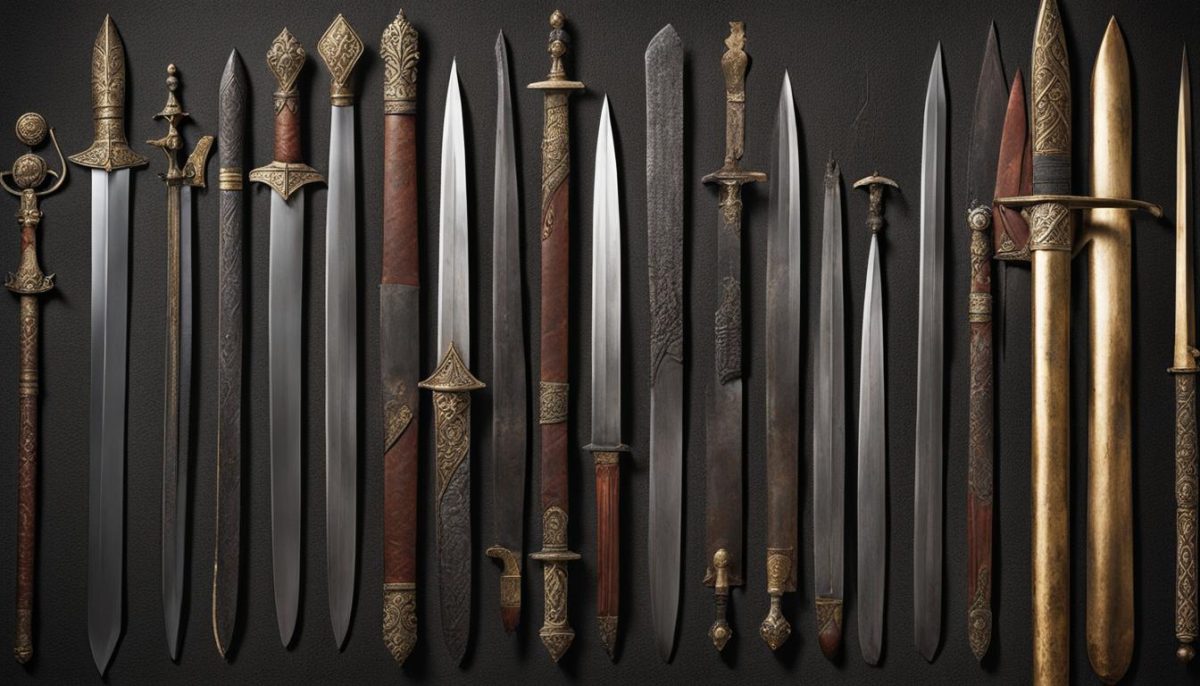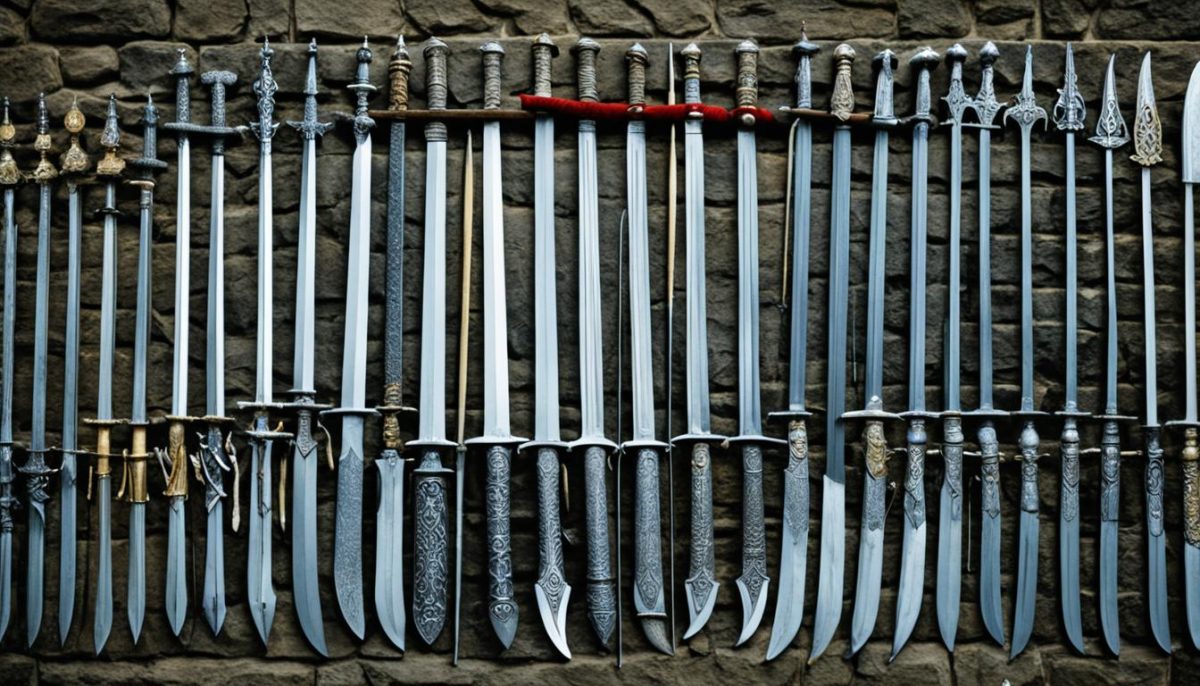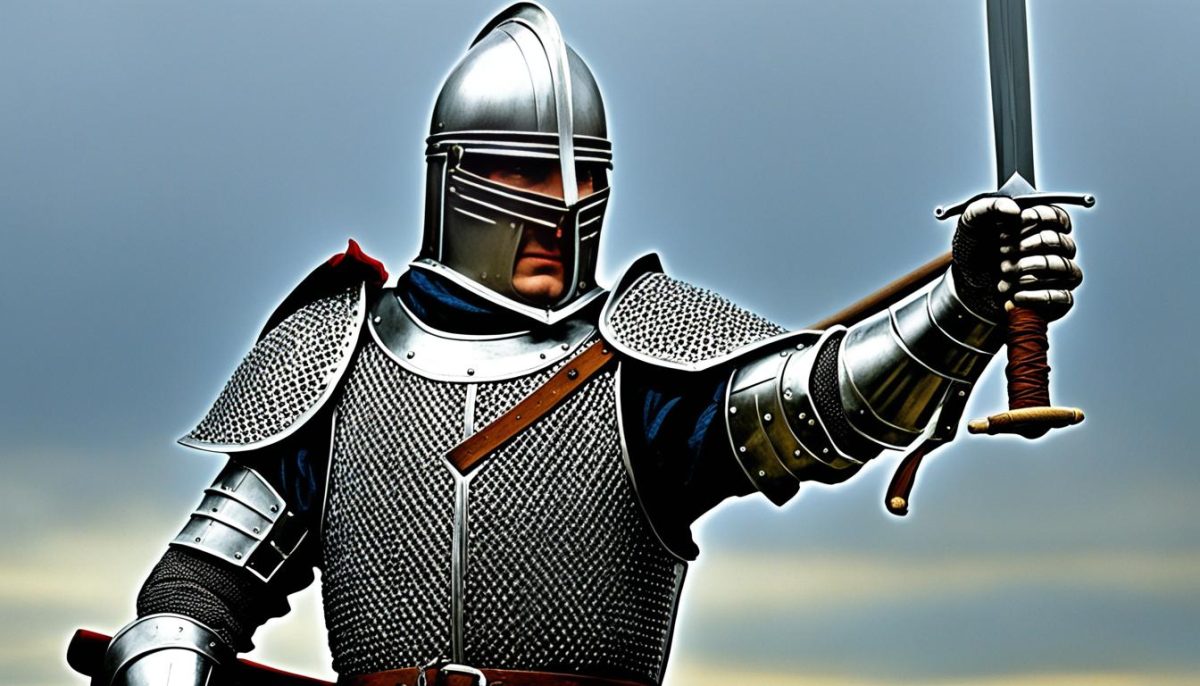The history of swords is a fascinating journey that is as sharp and enduring as the weapons themselves. These ancient symbols of power and martial skill have stood the test of time, evolving from primitive implements to complex works of art and engineering. The ancient weapons we recognize today as swords emerged from the crucible of history, their sword origins traceable to the hands of early metallurgists and warriors. But when exactly did the earliest swords flash into existence, and how did the invention of swords shape the world we know?
Archeological excavations and scholarly research suggest that swords were first crafted during the formative years of the Bronze Age, around 1600 BC. This significant period in history bore witness to a remarkable leap in weapon technology—the transformation from rudimentary blades to the first true swords. As an object of both martial utility and noble prestige, the sword quickly found its place across the globe, with various cultures contributing their own unique designs and forging techniques to the evolving narrative of these formidable bladed weapons.
The Dawn of Swords: Tracing the Origins
The genesis of sword-making is a testament to human ingenuity and the relentless pursuit of improved weaponry. In the Bronze Age, early swords emerged as symbols of power and practical tools for combat. The journey from copper to bronze blades marks a significant chapter in the history of warfare and craftsmanship.
Early Examples of Swords in Human History
Among the annals of ancient weaponry, the occurrence of Bronze Age swords signifies a pivotal innovation. Unearthed relics from the Eastern Mediterranean to the sands of Mesopotamia reveal the primary steps towards sword evolution. The initial designs were simple, with straight blades that hinted at the functional and ceremonial roles these early swords would come to fulfill.
Technological Evolution: From Copper to Bronze
Initially wrought from copper, these foundational arms were limited in strength and durability. Through metallurgical advancements, a transformative leap from copper to bronze forged a new era of superior weaponry. The advent of bronze crafting not only extended the life and resilience of the swords but also allowed for the creation of longer, sharper blades that bore the promise of conquest and defense.
Geographical Spread of Sword Development
The art of sword-making did not remain isolated to a single region. Instead, it propagated across continents, embedding itself within the fabric of Europe, Asia, and the Middle East. Each culture adapted the basic form to create a weapon that was unique to their needs, all the while contributing to the universal narrative of the sword. The dissemination of copper swords to Bronze Age swords reveals a pattern of human connection motivated by the shared pursuit of progress in armaments.

| Region | Characteristics | Material | Influence on Design |
|---|---|---|---|
| Eastern Mediterranean | Straight blades, ornate hilts | Initially copper, later bronze | Naval warfare and trade |
| Mesopotamia | Sturdy build, simplistic design | Transition from copper to bronze | Agricultural and territorial expansion |
| Europe | Varying lengths, double-edged | Bronze, Iron Age transition | Feudal military systems |
| Asia | Curved blades for some regions | Bronze, with regional variations | Cavalry and infantry tactics |
| Middle East | Heavy-duty, ceremonial | Bronze, notable alloy variations | Desert warfare and empire-building |
In conclusion, the chronicle of bronze swords is a gripping saga of human endeavor. From the earliest forges to the diverse battlefields they graced, these instruments of war embody the intersection of necessity and artistry that fueled the ascendance of civilizations.
The Cultural Impact of the Sword Through History
The sword, with its sharp gleaming edge and storied past, has had an undeniable impact on culture around the globe. From the clinking armor of European knights to the stoic discipline of Japanese samurai, the sword’s presence is a constant reminder of its deeper significance beyond mere combat. It symbolizes nobility, honor, and the very essence of chivalry. This profound reverence for the sword is visible in historical texts, royal ceremonies, and has been deeply embedded within societal structures through the ages, marking it as a timeless emblem of power.
Symbolism and Status: Swords in Ancient Societies
The imagery of sword symbolism resonates with historical swords carried by figures of high esteem, acting as a beacon of status and authority. In ancient societies, the mere possession of a sword often denoted a person’s rank and privilege, and in some cases, divine right. The physical beauty of swords, often embellished with precious metals and exquisite engravings, further cemented their role in showcasing wealth and influence in ceremonies and court life, signifying might and leadership.
Advancements in Metallurgy and Impact on Sword Making
Metallurgical techniques evolved significantly over time, shifting from bronze to iron and eventually steel. These advancements were not purely scientific achievements; they revolutionized sword making and by extension, warfare itself. With improved sword durability, edge retention, and performance, warriors had to adapt with new fighting techniques. The relentless drive for superior weaponry was both a cause and result of the quest for supremacy that changed the fabric of ancient battlefields and conquests.
Swords and Their Role in Literature and Mythology
Swords in literature and mythical swords have a special place in the collective human psyche, ingrained through epic narratives and legendary heroes. Tales of King Arthur and his mythical sword Excalibur, among others, have been pivotal in propagating the sword’s symbolism through the ages. These stories resonate with ideals of justice, bravery, and the hero’s journey, epitomizing the sword as an instrument of destiny and heroism. Their narrative power ensures the sword remains a stalwart icon in the fabric of cultural history, inspiring countless generations.


